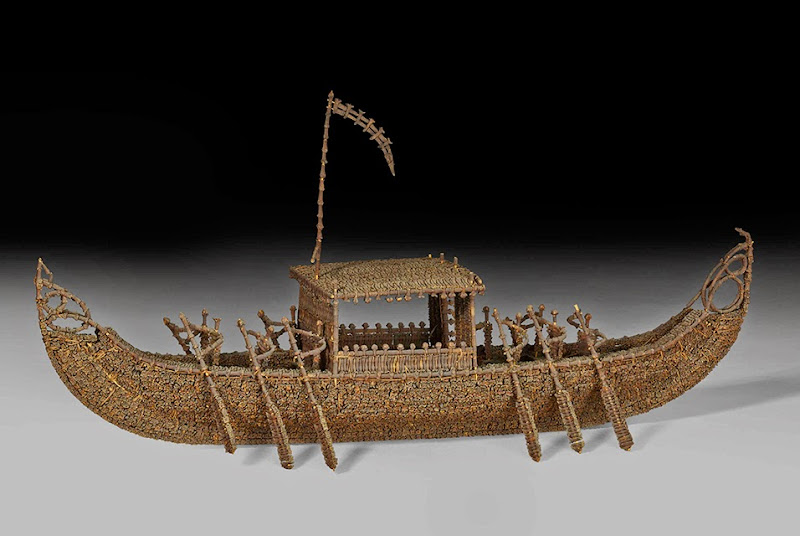Objects connected to the long history of trade in the Indian Ocean can be found throughout the British Museum. The new exhibition, ‘Connecting continents: Indian Ocean trade and exchange’, is the first time a selection of these have been exhibited together to tell the story of how this vast oceanic space has connected people and cultures from Asia, East Africa, the Middle East and beyond.

‘Connecting continents: Indian Ocean trade and exchange’ explores trade from several perspectives. The exhibition features the commodities traded, such as textiles, precious stones and ceramics, which might have been found thousands of miles from their point of origin or production. Other objects on display indicate the use of foreign commodities, such as Roman jewellery made of South Asian sapphires and garnets. The exhibition also demonstrates how objects and their meanings change through these journeys. Coins, for example, were used in many ways – as money, bullion or incorporated into jewellery.
A model boat, made entirely of dried cloves threaded together and displayed for the first time, is the centrepiece that embodies many of the themes in the exhibition. The clove tree is indigenous to Indonesia, from where this boat is likely to originate. The maker used this intricate technique to create a model of a traditional trading ship. These types of model were popular in the 18th and 19th centuries with Europeans, many of whom worked in the East India companies involved in the highly lucrative spice trade. Cloves, as well as cinnamon, pepper, ginger and other spices, have been central to Indian Ocean commerce for millennia. This single object, only half a metre long, illustrates the significance of spices within the Indian Ocean commercial world, the ships used to transport them and how this trade led to the interaction of different cultures.
The written records of merchants and travellers offer further insights into the nature of this trading system. The 14th century Muslim pilgrim, Ibn Battuta, travelled to East Africa as well as to the Far East, describing in detail the commercial world and the cosmopolitan towns he encountered. Objects found in places Ibn Battuta visited form one section of this display.
The long duration of trade in the Indian Ocean is also demonstrated with beautiful jewellery incorporating carnelian beads from the Indus valley dating from around 2500BC found in the Royal Cemetery at Ur in Mesopotamia.
Pottery from India and East Africa from the 7th to 10th centuries AD found in Siraf on the Gulf coastline of southern Iran illustrates the global movement of people. At this time Siraf was one of the major trading posts on the Ocean rim and these everyday items were likely to have been used for cooking by foreign merchants who sailed long distances to engage in trade.
By thinking about history from the perspective of the ocean, areas which appear small on the map such as the Maldives, become highly significant when we realise they were vital points of refreshment for ocean-going vessels and acted as trading posts. Islands such as these, which are often only associated today with luxury tourism, were central to this early globalised economic system.
The compelling object histories in this display represent a huge geographical spread and tell this long and significant history. Every object in this small space contains myriad stories of interaction, movement, exchange and connection which has characterised the Indian Ocean for thousands of years.
Source: British Museum [November 28, 2014]
VIA «'Connecting Continents: Indian Ocean Trade and Exchange' opens at the British Museum»